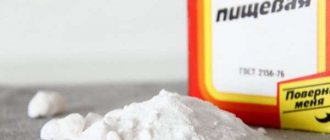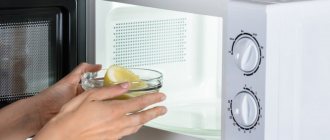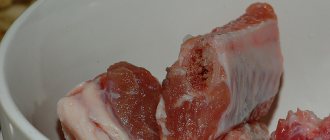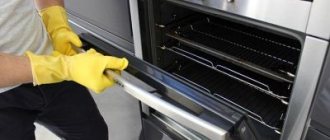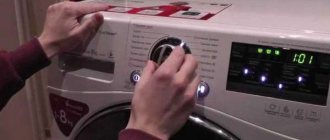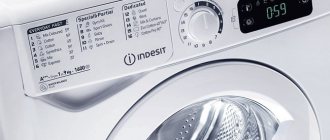Using a washing machine, you can easily wash all linens and clothes, including delicate and bulky textiles. Like any other household appliance, the washing machine requires proper care, otherwise problems will appear, including an unpleasant odor. Let's figure out why this happens and how to remove the smell from an automatic washing machine.
The video showed how to clean the machine to remove the smell
What causes the smell?
An unpleasant smell from a washing machine has many causes. But most often problems are solved quite simply.
Changing detergent
Sometimes the washing machine can become “sick” from bad detergent or laundry conditioner. A low-quality product may well provoke the appearance of mustiness in the unit. The substance is poorly washed out, settles on the walls of the drum and, accumulating, endlessly smells musty.
Tray dirty
Unfortunately, no material has yet been created from which an absolutely smooth tray could be made. Limescale and powder residues will still be deposited on its walls. Sometimes mold or mildew even appears, which can easily get on the laundry during the washing process. You can avoid rapid deterioration of a plastic drawer as much as possible if you wash it after every third wash.
The tray is removed from the compartment by pressing a special button (usually blue). It can be cleaned with a toothbrush, soap and warm water. If plaque is difficult to remove, soak the tray in any product containing chlorine. After 1.5-2 hours you can remove it - during this time the contamination should dissolve.
Channel contamination
In the same way, plaque can form on the walls of the channel through which the detergent flows to the drum.
You need to remove the tray and shine a flashlight deep into it. You will see mold and plaque immediately, and the smell will not make you doubt whether there is dirt there. You will have to manage to clean this part of the car. Some housewives use a special small brush. This is usually sold for washing dishes. But it is best for a specialist to handle this task. In fact, contamination can be avoided altogether if you regularly keep the tray clean.
Drain filter clogged
A drain filter is needed in the car to ensure that excess debris does not fall into the sewer. Therefore, this part periodically becomes clogged with hair, animal hair, etc. Experts recommend cleaning the filter every six months or as needed. Otherwise, everything accumulated in it will definitely begin to emit an unpleasant odor.
Attention! Due to a clogged filter, the machine may stop working altogether, as indicated by a signal or sign on the panel.
Usually the filter is located at the bottom of the washing machine. Wear gloves. Since some water may spill out, use a low-rimmed bowl or a cloth. Carefully unscrew the cap and remove the filter. Remove the bulk of dirt with your hands, and rinse off the remaining residue under water pressure. Reinstall all parts.
Old hose
If the drain hose has not been cleaned or replaced for a long time, then it also becomes one of the first causes of odors. Dirt and excess detergent easily settle and accumulate on the inner walls of the hose.
To clean it, run the machine on the highest temperature for an empty wash. Instead of powder, you can add baking soda (a little less than a glass).
Advice! For convenience, the hose can be detached. To clean it, a so-called Kevlar cable is used. There is a brush at its end. Clean in both directions and then rinse with hot water. If none of the methods work, the part will have to be replaced with a new one.
Scale
Most of all, dirt sticks to the tubular electric heater (TEH). Usually it attracts everything: lint, soap, and sediment from not very good water. Then this “wealth” begins to fade and stink, especially when you wash only at low temperatures. In general, high temperatures won’t help much. If a thick layer of plaque has accumulated on the heating element, it can simply burn little by little, emitting the corresponding “fragrance”.
How to clean:
- Pour a couple of bags of lemon juice or a little substance containing chlorine into the tray.
- Run the car at a temperature of at least 90 degrees.
Advice! If this does not help, call a specialist. Let a professional take care of the problem.
Problem with sewer lines
If you are sure that all the most “favorite” places for plaque are normal, and your washing machine is completely clean, then perhaps the root of the problem is not there at all. Sometimes an unpleasant odor comes from sewer lines. Their malfunction can be indicated by stench from other sources: sinks, shower stalls, bathtubs.
In this case, it will not be possible to get rid of the smell. Usually such pipes need to be replaced, which is also beyond your power. But you can avoid getting a rotten smell into your apartment through the washing machine. The main thing is to correctly connect the hose to the drain. It should take the shape of the letter “U” and be no higher than 50 cm from the floor. In this case, a seal is formed, and the stench does not penetrate beyond the drain.
Abuse of detergents
It’s not for nothing that washing machine manufacturers put divisions in the tray. And it’s not just that instructions are written on the packaging of the powder. This is an important point - how much detergent to put in for washing. Excess sticking to the walls of parts can cause an unpleasant odor.
Mold and mildew
Mustiness inevitably appears if you constantly wash at less than 40°C. In this case, fungi and bacteria multiply at breakneck speed, because all the conditions are created for them: heat and moisture. They cause a musty smell and end up on the laundry during washing. Mold forms especially actively in machines with horizontal loading, since they use much less water during operation. That is why top-loading machines are now becoming very popular.
When should you call a plumber?
If you can’t get rid of the smell in your washing machine on your own, call a plumber. During the diagnostic process, it sometimes turns out that there is a breakdown in the car.
A specialist will inspect the washing machine, find the cause of the bad odor and correct the problem:
- clean and disinfect the rubber door seal;
- wash the drain pump filters;
- clean the powder tray;
- removes scale from the heating element;
- will replace the heating element with a new one if necessary.
Traditional methods
To clean your automatic machine from dirt and odors, you will need a minimum of time, effort and money. In addition, these methods are time-tested.
Hot water
The easiest way to clean it is to run the wash cycle at high temperatures (at least 90°C) for a three-hour cycle. This treatment will help kill all microorganisms that have settled inside.
Vinegar
Vinegar easily eats away the limescale that accumulates on the electric heater, as well as the deposits inside the drain hose. Moreover, despite its aggressiveness, the acid does not in any way affect the further operation of the washing machine. It also neutralizes strong odors and disinfects.
Attention! Vinegar should be used as carefully as possible when cleaning rubber and silicone parts. And no more than once every four months.
How to clean a washing machine with vinegar:
- Pour 2 tbsp into the tray. 9% vinegar. Set the wash cycle to 90°C for three hours. Start the machine, turn it off after 5 minutes and leave it for an hour. During this time, the acid will have time to dissolve the contaminants. Then the process continues. After “washing”, do not forget to clean the filter.
- Pour in 1 tbsp. l. vinegar in 0.5 liters of water. Soak a cloth in the solution and clean all parts of the machine with it. Then run a short wash (without laundry or detergents). Be sure to let all items dry before washing them.
Lemon acid
Citric acid will help clean your washing machine from odors and deposits. In addition, it contributes to quieter operation of the equipment. But it also should not be used too often.
You will need 3-4 tbsp. l. lemons. If the washing machine instructions allow it, add a little chlorine-containing substance (for example, bleach). Pour the “lemon” into the tray and run the wash at high temperature without laundry for 2-3 hours. Select a mode so that there is no spin process. It is better to replace it with rinsing.
Advice! Be vigilant: if you hear a piece of scale break off, stop the process immediately and do not let it penetrate into the drain hole. This may cause a breakdown.
Soda
Soda is used more to prevent the formation of plaque, scale and fungus. There are several ways to get rid of unpleasant odors as effectively as possible:
- Pour half a glass of soda into the tray. You can add 4-5 ml of fragrant oil for scent. Run the washing machine "idle" on high temperature.
- With a solution of baking soda and warm water, you can simply periodically wipe the parts where dirt usually accumulates. And then start the rinse mode.
- This method is sometimes tried as a preventive measure. Before each wash, add 3 tbsp to the powder. l. soda or 1 tbsp. l. vinegar. The latter, by the way, is preferable if hard water comes from the tap.
- If there is already a smell, and quite persistent, for example, gasoline. The amount of substance increases significantly. This is how you clean your washing machine. Pour half a pack of soda into the powder compartment and run the wash “idle” at a temperature no higher than 30°C. After this, start another one, only with the addition of vinegar (1 tbsp.) at a temperature of 60°C. After all, air the drum for at least three hours.
Lemon acid
Citric acid will help remove odors from your washing machine. Cleaning your car with citric acid is allowed every four months. 100 g of acid must be poured into the powder tray. After this, select a program that guarantees maximum water heating. After this, an additional rinse is required. Finally, the cuff and drum should be thoroughly wiped. We leave the door open. If washing is performed frequently, it is possible to carry out this procedure for prevention every month or two. But in this case you need to take a maximum of two tablespoons of acid.
Professional products
There are cases that no folk remedy can cope with. Then you should turn to special household chemicals. The treatment must be carried out in accordance with the instructions, using a high temperature mode and a subsequent washing cycle with additional rinsing:
- Calgon. Protects the drum, as well as the electric heater of the washing machine, from plaque and scale, while softening the water.
- Master Glitter. Chistolan Automatic. Same composition and application as the previous product. The housewives assure that the result is the same, and the price of Chistolan is much lower.
- Tiret. It will help not only remove unpleasant odors, but also clean the washing machine from any type of deposit. A bottle containing 250 ml of cleaning agent is designed for one use.
- Doctor Ten. Removes scale and kills all dangerous bacteria, eliminating bad odors.
- Chistin effect 2 in 1. The manufacturer assures that the product will extend the life of the washing machine. It removes scale and prevents its reappearance.
- Refine. Probably one of the most budget-friendly products in the line of products for washing machines. Users note that the product is no worse than other expensive well-known ones. Used for active descaling.
Preventive measures
Of course, it is very difficult to deal with several layers of scale and deposits with a strong odor. The best thing to do is to take care of your washing machine on a regular basis, not when it starts to get sick. Try to follow these rules to keep your equipment in good working order longer:
- Do not lock the door immediately after washing; let the machine remain open for 1-2 days. The parts need to dry.
- Do not store dirty clothes in the washing machine. Buy a laundry basket that will allow air flow.
- After washing, check the drum for small debris and wipe the rubber cuff with a dry cloth. Otherwise, it will have to be changed, since the accumulated plaque can eat into the rubber.
- Try not to use untested cheap products.
- Pour a sufficient amount of powder into the tray, without exceeding the measure.
- Invite a specialist periodically. He will examine your car inside and out.
- Be sure to check that your washing machine is level and in accordance with the recommendations. When skewed, some of the water may accumulate without finding a way out.
- After each wash, wipe the drum with a dry cloth.
- Check pockets of clothes before loading them into the machine.

